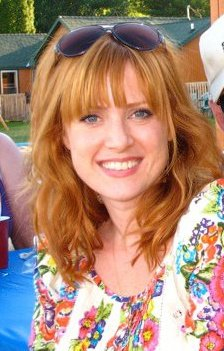Tags
casting a film, casting a movie, directing, Film Directors, how to cast a movie, meditate, meditation, Meditation for artists, Meditation for film directors, rehearsals, rehearsals in film, research for films, shotlist, shotlisting, should i rehearse my film, Storyboarding, Storyboards, Strategies of a film director
One of the founding principles of my production company Fatelink is our belief in the organic development of material.
What does that mean exactly and how do we organically develop material in an age when time is a precious and expensive commodity for the higher profile actors who sometimes drop in for only a day or two of rehearsal, if that?
For me, at the core of the concept of organic development of material is an idea – the idea that the material itself has a life of its own. Furthermore, over time – the film will communicate with you and clarify what it wants to be, much like a child asserting to a parent the profession that suits their personality. I see directing films not so much as a general leading troops to battle to execute a plan, but as a meditator quietly listening to the “voice of the film” that’s already forming itself somewhere beyond our ordinary day-to-day life. Then, it’s the director’s job to support that voice and to encourage it, just as a good parent enrolls his child in karate classes when they express a desire for a career in the martial arts. The “voice of the film” doesn’t scream at you – it whispers, it entreats, it inspires and, sometimes, it vexes you, especially when the “voice of the film” wants to shoot underwater or rewrite a scene to require more speaking parts that will prompt a difficult conversation with the producer. And the “voice of the film” doesn’t speak in a rapid-fire monologue that is discoverable in one sitting. It requires a number of sittings, over time, and there is room for negotiation. Interestingly, if you really can’t afford those other actors and go back to the “voice of the film”, it may come up with an alternate idea. What I’m calling the “voice of the film” also may evolve as you the director gather information through research, thought and rehearsal.
Admittedly, filmmaking in 2017 seems particularly unsuited for this meditative directorial style. In the studio world, hiring a general makes a lot more sense. After all, they have hundreds of people to be corralled to make the film (some of them, quite frankly in my opinion, who are unnecessary). And even when the “voice of the film” begins to call out to the people involved that the plan needs to change, it’s more effective to execute the plan that was drafted before. After all, hundreds of people have committed to it (and in some cases, it seems like hundreds of people had to agree to it, too) and it’s already in motion. Studios feel they must populate their films with actors that drive box office returns, so when a fragile voice expresses, ‘we need someone with XXXX quality to embody this role, not that huge star’, it’s a business imperative to ignore that voice.
The beauty of being an independent filmmaker is that the lower budget and freedom from bureaucratic power struggles mean that the “voice of the film” has a much better chance of emerging. But don’t be fooled – even an independent film has internal political pressure and time is always a factor. So it’s important to set up your process in a way that empowers the “voice of the film” rather than disempowers it.
Here are some simple steps you can take to ensure that your film discovers and heeds its own voice in an organic way.
- Don’t be fooled by magical thinking that says rehearsal is unnecessary in film. I’ve heard so many director’s commentaries where it’s said that a chosen moment in the film was “the first take” and that the film did not rehearse the scene whatsoever. I’ve then heard 23-year old directors mimicking that sentiment with broad statements like, “I don’t believe in rehearsing for film.” But it’s dangerous for new and emerging filmmakers to adopt the attitude that rehearsal is something for amateurs and theatre actors. First of all, so often what underlines this attitude in newer directors is hubris rather than a genuine philosophical point of view (The subtext of that previous quote from Mr. Hot Young Director is, ‘I’m so brilliant that I don’t need rehearsal – it would only slow down the magic that is flowing from my brilliance….’). Done properly, rehearsal is a time when the “voice of the film” reveals itself and, if you’re listening, you will find a moment or two that you didn’t know existed when you wrote the screenplay. You’ll discover dialogue that’s unnecessary and other dialogue that can be simplified. You’ll realize that the intricate shot you storyboarded isn’t as important as an ordinary medium or close-up that reveals something more important…and will footnote that moment as a priority for later on set.
- Hire high profile actors. But don’t put them in every single role. The economic reality of independent filmmaking is that you must put some high profile actors in your film to increase your chances to sell and distribute the film. But I strongly, strongly suggest you resist the temptation to put high profile actors in every single role. Why? Usually, these actors – even when working for scale – are less available for rehearsal and conversation before the film starts. They tend to drop in on your movie for the allotted amount of time, then go away again. They do what they do extremely effectively, but you don’t want an entire cast that is under that sort of time crunch. If you have an ensemble film of seven main characters, I suggest going for high profile actors for three of the seven roles, at the most. With the other roles, choose amazing working actors that perfectly fit the archetypal quality of the character. And make sure with their agents that they are available for an extensive amount of time for rehearsals. Usually, these actors are extremely grateful to get a leading role, so you will have an easier time going out with them for coffee just to talk about the film and the role. And this time is crucial because, again, it’s simple conversations like this when the “voice of the film” starts to emerge. And you want to feel 100% confident in those conversations, rather than feeling like you owe an agent a favor for an hour’s discussion with his or her client. What I’ve seen is that once the really high profile actors come on set and realize how much development and work has gone into the film and the other characters, they are inspired to dive in and are suddenly on their A+ game, so you end up getting the best of all worlds.
- Storyboard the entire film. Shotlist the entire film. Again, related to the point I make in #1, I’ve heard directors as young as 21 insist that they never shotlist or storyboard their films, but rather discover everything on set. Usually, this is accompanied by some sort of statement about shotlists being too “limiting” or a desire to shoot things, “in the moment.” And again, I am skeptical of whether this mentality is hubris or just laziness. Here’s why storyboarding and shotlisting are important, other than their advantages of keeping the crew informed, organized and prepared and just having a plan generally. Storyboarding and shotlisting force a conversation with the “voice of the film” that you might otherwise be too busy to notice. Going shot by shot allows you to organically hear what your film is resisting and what makes it enthusiastic. It’s sort of a boot camp for understanding what type of film you’re directing. If you have enough of these sorts of conversations, you become attuned to the “voice of the film” so much so that if you decide there’s a scene you need to improvise, you will know how to direct that scene without a shotlist. But again, that ability to be “in the moment” can only come from the weeks of work listening and understanding the “voice of the film” through the storyboarding and shotlisting process.
- Read. Then Check in. Watch Movies. Then Check in. It can be difficult to separate yourself as a private individual from the film you are serving. So one simple, but effective tactic for developing the “voice of your film” is to check in with your film immediately after reading or watching a film. As an individual, you may have one reaction to a novel, poem or essay, but the film inside you may find something else of value in what you’ve just read. The same concept applies to watching films. So it’s helpful to ask the “voice of the film” inside you, ‘What did you find interesting or useful about that? You might be surprised at what comes back.
- Meditate. First of all, let me be honest. When it comes to meditation, I’m like an alcoholic – on the wagon, then off again. However, I have noticed that meditation helps draw up the ideas needed for a film. The process through which that happens is a bit mysterious and also important to keep private, I feel. But don’t take my word for it. Learn meditation from someone who knows what they are doing and you will see results (send a message if you’d like me to recommend someone).
These are just five out of an infinite number of ways you may begin listening to the “voice of your film.” If you have any more methods helpful to directors or screenwriters, please leave them in the comments!

 And the variations of duty with regards to artists are not binary, but rather limitless because there are an infinite number of individual variations of important qualities that need embodiment and exploration for the greater good. Artists must just take more time – and indeed walk through a bit of a creative process – to become conscious of their own intrinsic qualities that can be helpful to the culture at large…and how to then formulate those qualities into a sort of vision statement, or duty that serves their fellow citizens.
And the variations of duty with regards to artists are not binary, but rather limitless because there are an infinite number of individual variations of important qualities that need embodiment and exploration for the greater good. Artists must just take more time – and indeed walk through a bit of a creative process – to become conscious of their own intrinsic qualities that can be helpful to the culture at large…and how to then formulate those qualities into a sort of vision statement, or duty that serves their fellow citizens.








